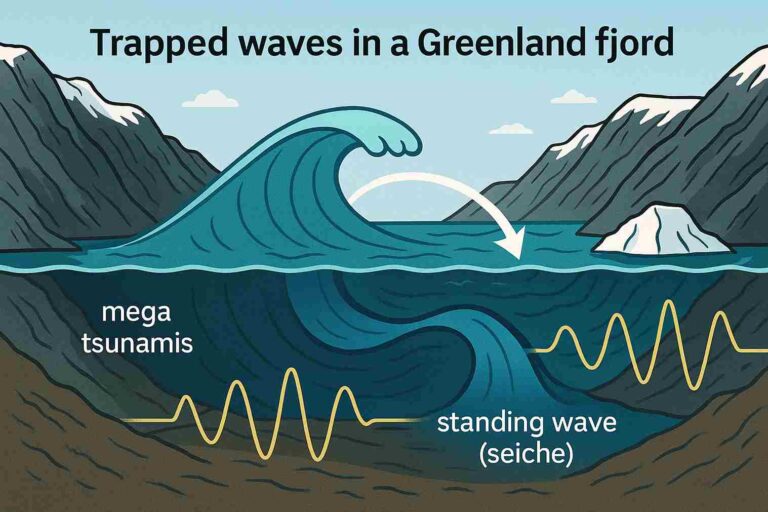
A Game-Changing Discovery About Mars’ Watery Past
For years, scientists have debated whether Mars was once home to large bodies of water. Now, a groundbreaking study has provided the strongest evidence yet—not only did Mars likely have a vast ocean, but it also may have had beaches where waves once lapped against the shore!
A team of international researchers, including scientists from Penn State and the Chinese Academy of Sciences, used data from China’s Zhurong Mars Rover to uncover signs of ancient coastal environments beneath the Martian surface. Their study, published in Proceedings of the National Academy of Sciences (PNAS), reveals that Mars’ northern hemisphere may have once been covered by a gigantic ocean.
How Did Scientists Find Evidence of Beaches on Mars?
The Zhurong Rover, which landed in Utopia Planitia in 2021, is equipped with advanced ground-penetrating radar (GPR). This technology allows it to “see” deep beneath the surface, much like X-rays help doctors look inside the human body.
Using this radar, scientists detected layered rock formations that are strikingly similar to coastal deposits on Earth. These formations, known as foreshore deposits, form when ocean waves move sand and sediment over time, creating a sloping pattern toward the water.
👉 Key Clues That Mars Had a Coastline:
✔️ Sloping rock layers that match Earth’s beach formations
✔️ Evidence of wave activity, suggesting a dynamic ocean environment
✔️ Sand and sediment transported by water, not just wind or volcanic activity
“We found clear signs of wind, waves, and shifting sands—just like we’d see on a beach on Earth,” said Professor Benjamin Cardenas of Penn State, a co-author of the study.
What This Means for Mars’ Past—and Future Exploration
If Mars had ocean waves and coastal landscapes, it means the planet was not just wet, but actively shaping its environment millions (or even billions) of years ago. This discovery adds to mounting evidence that Mars may have had the right conditions to support microbial life.
On Earth, life first evolved in the ocean—so if Mars had an ancient sea, could it have hosted primitive life forms? Scientists are eager to investigate further.
👉 Why This Discovery Matters:
🔬 Stronger proof that Mars had a stable water cycle
🌎 Hints that Mars may have been habitable for much longer than previously thought
🚀 Informs future Mars missions, helping scientists choose where to look for signs of life
Could There Still Be Water Hidden on Mars?
This discovery also raises another big question: Is there any remaining water beneath Mars’ surface? While liquid water likely evaporated or froze long ago, some researchers believe subsurface ice or underground water pockets may still exist today.
NASA and other space agencies plan to use advanced radar tools on future missions to look for trapped ice, which could be crucial for human exploration of Mars. If astronauts land on Mars in the future, finding water would be key to survival.
What’s Next? The Search for More Evidence
Scientists are now analyzing additional data from Mars missions, including NASA’s Perseverance Rover and ESA’s ExoMars program, to see if they find similar beach-like formations elsewhere.
If Mars had oceans, how big were they? How long did they last? Did any life forms exist in those waters?
These are the mysteries scientists are eager to solve—and this new discovery brings us one step closer to answering them.
Final Thoughts: Mars’ Beaches and the Future of Space Exploration
This discovery transforms our understanding of Mars. The idea that Mars was once a blue planet with coastal landscapes challenges everything we thought we knew about its history. It also reinforces the importance of robotic exploration, proving that new technologies—like ground-penetrating radar—can reveal incredible secrets buried beneath the surface.
With every new discovery, Mars seems less like a barren wasteland and more like a planet that may have once been alive. The next steps? Scientists will keep searching for more clues about Mars’ watery past and the potential for ancient life.
🚀 Stay tuned for more exciting space discoveries in our Science News section!






